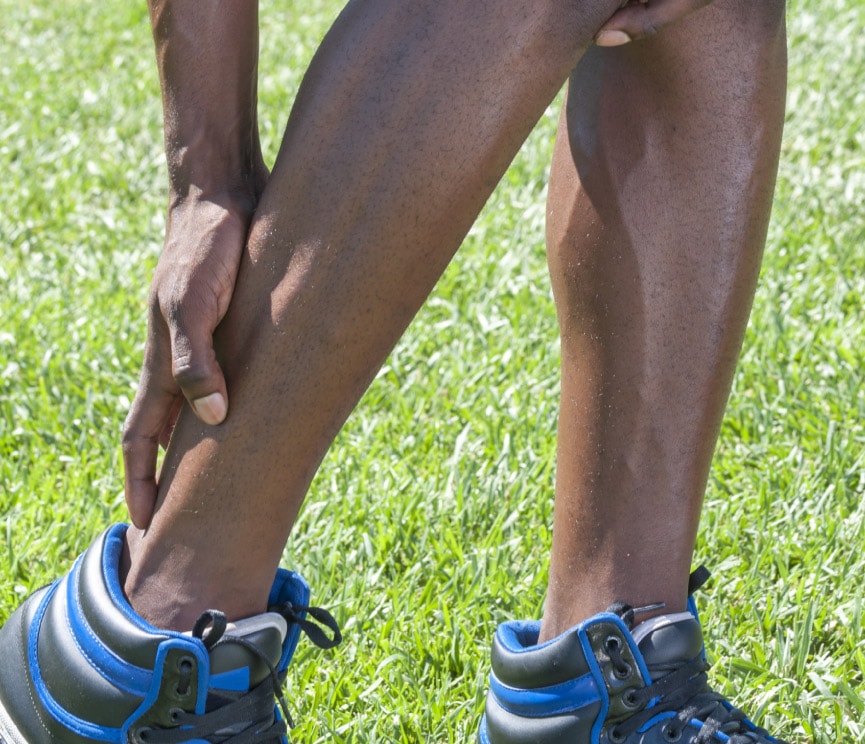If you are suffering from ankle problems, its time to contact a podiatrist straight away.
At Barefeet, we deal with any ankle related problems, whether its ankle pain, sprained ankle, broken ankle, ankle arthritis, ankle swelling, swollen ankles, fractured ankle, twisted ankle, rolled ankle or ankle joint pain.
If you are looking for ankle pain treatment or sprained ankle treatment, contact our North Sydney Podiatry clinic today, and we will be happy to help.

What is the medical term for it?
Peroneal Tendinopathy, Peroneal tendonitis, Lateral ankle sprain, Peroneal tendon pain, pain on the outside of the foot is called Peroneal Tendinopathy (Lateral ankle pain).
Peroneal (the tendon name) itis (medical term for inflammation – peroneal tendonitis. It is the acute or chronic inflammation of either (or both) the peroneal longus or peroneal brevis tendons.
What is Lateral Ankle pain?
Lateral ankle Pain (strain) is inflammation, irritation and swelling of the Peroneus Longus / brevis tendons at the attachment to the calcaneus or tibia. There are two muscles with tendons that can be affected; Peroneus Longus / Peroneus Brevis
TOO MUCH LATERAL ANKLE MOVEMENT
This is caused predominately by supination (Rolling out of the foot).
As shearing and tractional forces are placed on the Achilles tendon, inflammation can occur at the attachment to the calcaneus (heel bone).
ITS ALL ABOUT FOOT STRUCTURE
If the foundation is not correct (foot) and in the best position, then the walls (legs) and roof (hips / lower back) are out of alignment.
ACCIDENTAL GOING OVER ON THE ANKLE
Usually, the first sign of peroneal tendinopathy is when someone goes over on the ankle – also called lateral ankle sprain.
Sydney’s Best Clinic in solving Heel & Foot Pain
We are a RESULTS based clinic, we focus on solving YOUR heel or foot problem!
Over 15 years of experience, conference lecturing, University lecturing and tutoring, we are focused on SOLUTIONS that work & are practical!

What are the symptoms of Ankle problems?
Pain
Swelling
Redness
Inflammation
Bruising

What are the causes of Ankle problems?
Rolling of the foot
A form of arthritis
Gout- the build-up of uric acid (a product which breaks
down old cells) causing sharp pain
Injury or nerve damage
Blood vessels being blocked
Joint infections
What can barefeet podiatry do to treat this?
At Barefeet, we can advise you on the best solution to fix your ankle problem.
Schedule an appointment with us today at our Sydney Clinic.
ORTHOTICS FOR YOUR FOOT
We can prescribe you with Orthotics that are custom-made to your foot. This can help improve how the foot and ankle move which will stop the tendons from stretching. It will also put into the foot into its correct alignment.
This will give it time to heal and prevent too much pressure being applied.
TEMPORARY ANKLE STRAPPING
By strapping your foot, it will allow the tendons to relax and avoid too much pressure being applied. This will allow for your foot to heal at a quicker rate. Our Podiatrist can provide advice on how to strap it effectively when you are at home. It is also important to remove it after three days.
Proprioception Training for the ankle
Change in your gym routine
Choosing the right footwear to support your ankle
Adapting the way you walk and how your foot hits the ground
Changing your body back to its correct alignment
Changing the way you walk up the stairs
Ankle brace
What should you do next?
It is important that you book an appointment with a Podiatrist straight away to help treat your ankle problem.
Whether you have experienced an ankle sprain or ankle swelling, with a biomechanical analysis, we can help diagnose the problem and give you the right solution.
If you delay the treatment, then it will take a much longer time to heal. This could also increase the risk of another injury.
If you need an ankle brace, at Barefeet Podiatry, you can buy one straight from our website. It is vital to get one if you do sports or any activity that requires a lot of movement.
Recent Case Studies
The Podiatrist Recommended A Neutral Shoe
A Podiatrist often recommends a “neutral” shoe, as this allows your foot to perform naturally
 Schedule an Appointment
Skip to content
Schedule an Appointment
Skip to content

 Schedule an
Schedule an 






